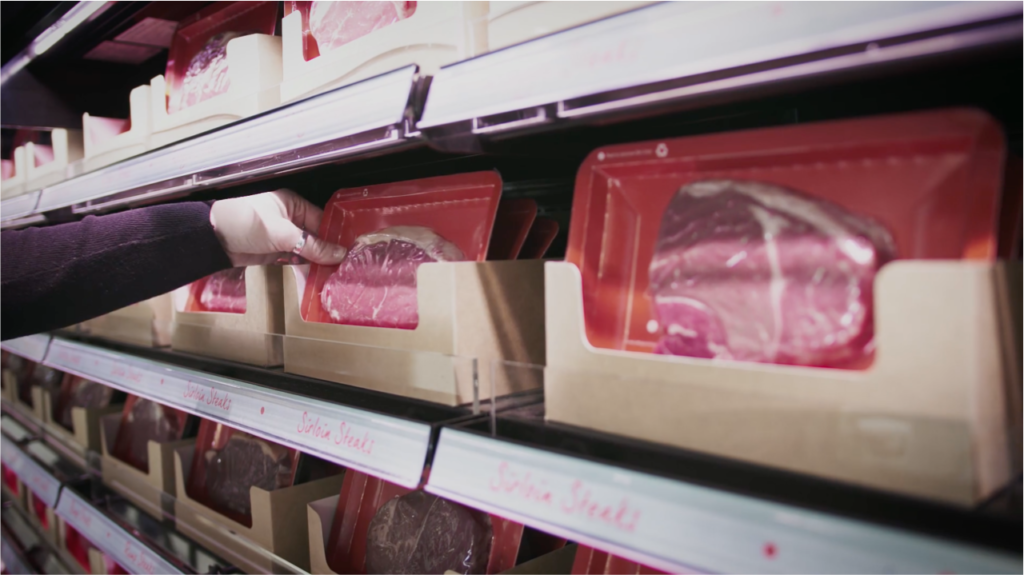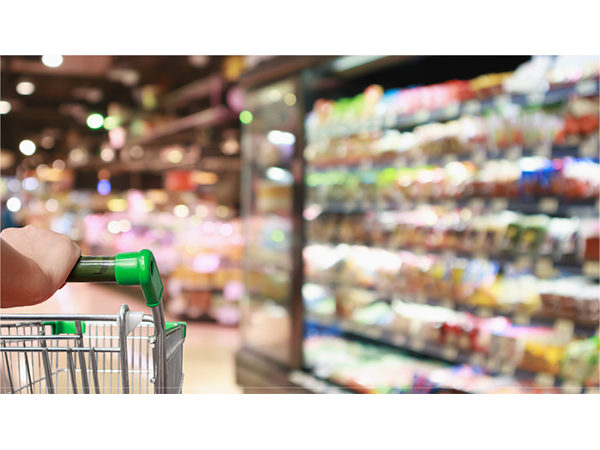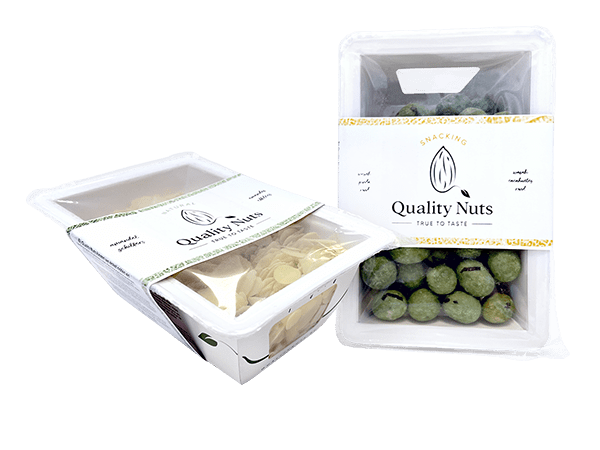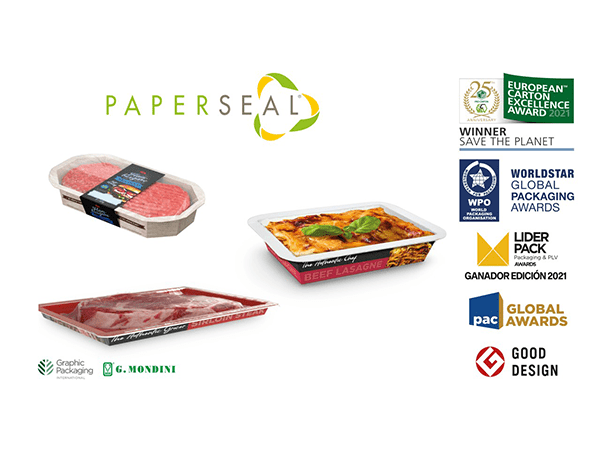article
The Top Trends Changing the Game in Protein Packaging in 2022 and Beyond

Consumers are emerging from the pandemic with new behaviors, attitudes, and values. At the same time, concern about packaging sustainability is growing. In this article, we look at how these shifts are converging with technology to translate into packaging trends in the protein industry.
1. Getting specific on sustainability
Sustainability will continue to be the overarching trend driving packaging design for the foreseeable future. However, consumers will not be persuaded by hollow rhetoric. Instead, they want to see clear and measurable progress from brands.
Consumers are increasingly demanding facts, figures, and evidence of sustainability as a point of difference between brands. According to Mintel, 40% are interested in labeling that measures a product’s environmental impact on things that they understand, such as water consumption and land use.
The sustainable packaging debate is already beginning to shift beyond whether a pack is recyclable. Consumers are increasingly aware that just because a pack is recyclable or compostable, it doesn’t guarantee that it is sustainable. To grow their share of voice in the evolving sustainability conversation, businesses must consider which packaging material offers the lowest environmental impact at every stage of its life cycle.
This evolving conversation will encompass all aspects of production and distribution. The circular economy will become a dominant driving force for innovation, and sustainability will become a holistic pursuit. Addressing the circular economy through the supply chain, considering raw materials, waste at the farm, resource optimization, value to the farmer, and efficient transit from farm to fork will all become key considerations.
2. Plastic reduction
The issue of sustainability is almost inseparable from the conversation around plastic reduction. This is unsurprising given how pervasive images of plastic waste piled up on beaches and floating in the oceans are, featuring in countless news articles covering environmental stories.
This issue is complex, as plastic does offer significant functionality in prolonging shelf life and preventing food waste, which is another key environmental concern. According to a study by McKinsey, consumers expect to see more recyclable or compostable films used in modified atmosphere (MAP) and vacuum sealed (VSP) packaging, alongside paper- and board-based packs.
This presents a difficult balancing act. Reducing reliance on materials from non-renewable sources must be weighed against food waste reduction and shelf-life preservation.
Hybrid packaging formats, such as the PaperSeal™ tray, are expected to continue to gain prominence as an effective compromise between these two conflicting needs. PaperSeal offers excellent oxygen barrier properties and can be hermetically sealed, while still offering significant reductions in plastic due to its fiber-based tray.
3. Redefining convenience
Convenience has been a megatrend in protein packaging design for some years, but the pandemic has redefined what convenience means to today’s consumer.
Mintel suggests that a third of US adults no longer wish to cook for themselves and their households, while home cooking has also lost its flavor for time-poor UK consumers. Cooking fatigue, hybrid working patterns, a return to busier schedules, and a more relaxed approach to routine are all driving demand for flexible, easy, speedy food solutions that alleviate feelings of stress and burnout.
Consequently, packaging formats that promote convenience, whether through resealability, cook-in-pack functionality, microwaveability, or portability, are on the rise.
Convenience will also continue to drive protein innovation. 73% of UK meat substitute consumers say more ready-to-eat products, such as meat-free scotch eggs and porkless pies, would appeal to them. By continuing to expand with new formats and ingredients that simplify cooking, businesses can help a broader consumer group – including meat eaters – explore new, more convenient plant-based options.
4. Protein substitutes continue their strong growth
Meat alternatives are expected to continue their strong growth as global initiatives like Meat Free Mondays increase in popularity. Meat production is an extremely resource-intensive process, with almost one third of the water used in the western US being used to grow crops that feed cattle. Protein substitutes and flexitarian diets are being strongly marketed as a solution to this problem, a trend that is expected to continue.
Many protein substitute brands are yet to switch from traditional plastic packaging despite research suggesting that sustainable packaging is more important to meat-alternative shoppers than ever.
This presents a tremendous opportunity for protein substitute brands to incorporate more sustainable packaging to appeal to the modern, socially aware consumer. Promoting synergy between an ethical brand message, a plant-based product, and sustainable packaging could be a key point of difference for the successful meat substitute brands of the near future.
5. Evolution of modified atmosphere packaging
MAP has experienced explosive growth in recent years, with Innova Market Insights revealing the technology has grown by over 30% in food and beverage packaging launches. This growth shows no signs of slowing down as concerns around food waste continue to intensify around the world.
MAP is a still-evolving technology. As sustainability concerns continue to dominate the global agenda, there is substantial demand for more sustainable packaging with MAP capability, whether that be via recyclable plastic packaging or reduced plastic hybrid options. For the latter, the quality of the hermetic seal is key to performance. Products such as PaperSeal, which incorporates a continuous sealing flange, can deliver shelf-life performance equivalent to – or better than – their plastic counterpart, as discovered by Rhug Estate Organic Farm, who moved their organic meat range to PaperSeal and increased the shelf-life by two days.
PaperSeal™. The future-proofed packaging solution
No matter which of these trends influences the next generation of protein packaging, PaperSeal™ provides the answer.
Developed in partnership with world leaders in tray sealing technology, G. Mondini, and fully reflective of our forward-looking approach to consumer packaging, PaperSeal is an award-winning innovation that enables plastic food trays to be replaced with a more sustainable fiber-based alternative.
PaperSeal trays are made using renewable fiber from sustainably managed forests and use up to 90 percent less plastic than their traditional counterparts. After use, the paperboard portion of the tray can be easily separated from the liner before being recycled through most curbside paper waste collection schemes.
The PaperSeal range includes solutions for MAP and vacuum skin packaging (VSP) applications as well as for chilled and frozen foods that can be cooked either in a microwave or a conventional oven.
High-quality graphics on both the internal and external surface deliver great on-shelf impact and can also accommodate requirements such as printed QR codes or RFID tagging.
In short, PaperSeal is perfectly attuned to a wide range of shifting consumer requirements. It’s a packaging solution developed today – with a firm focus on tomorrow.


